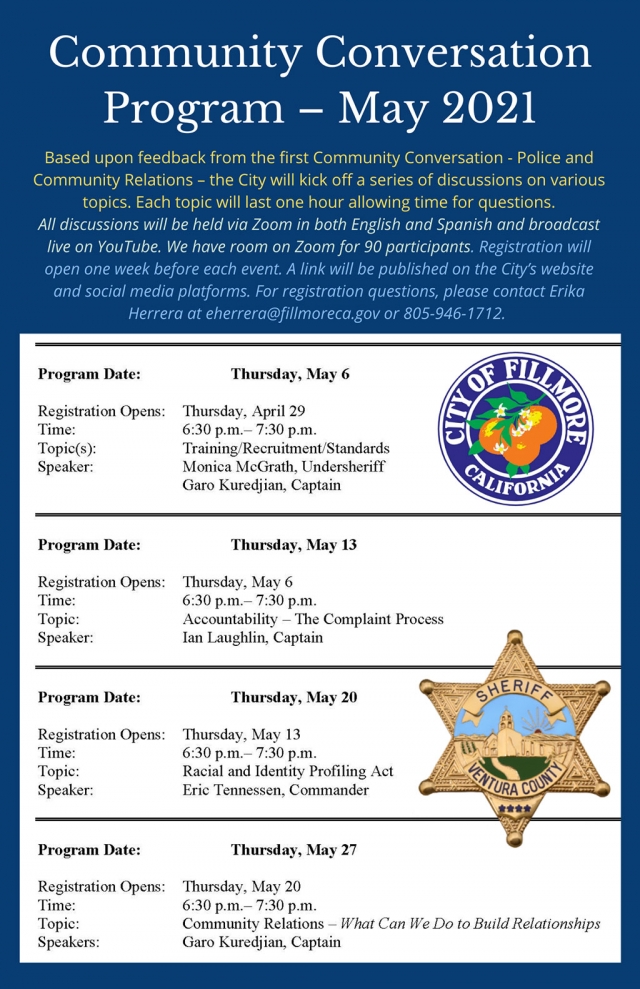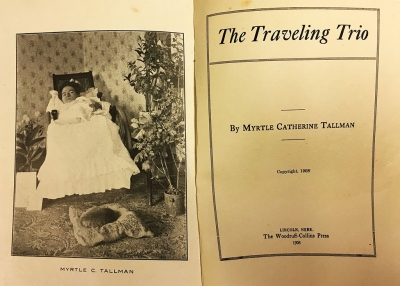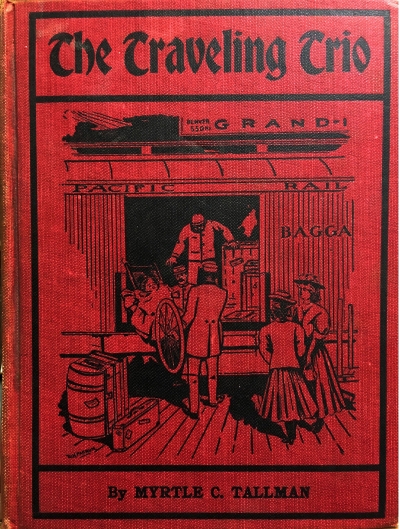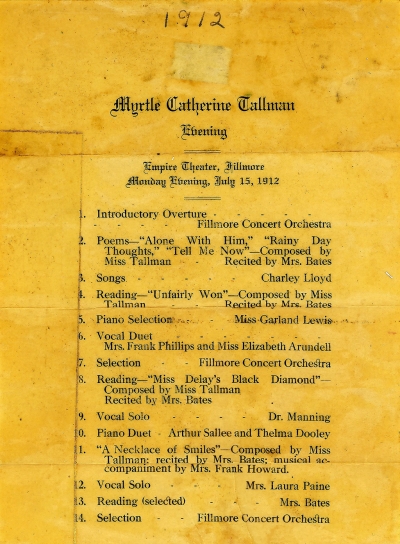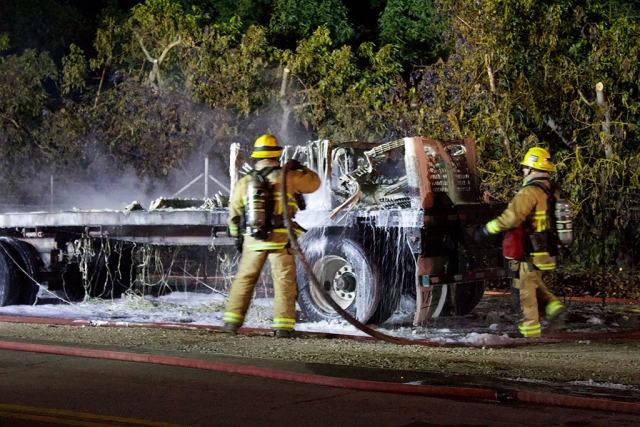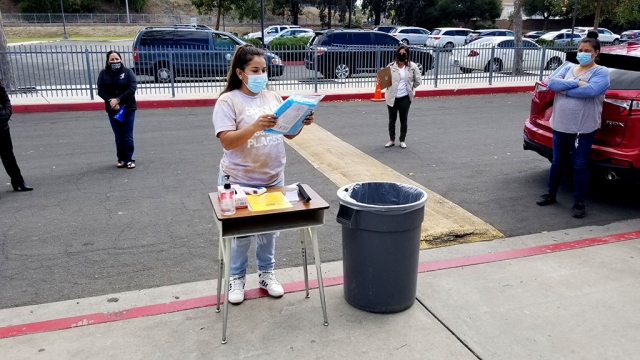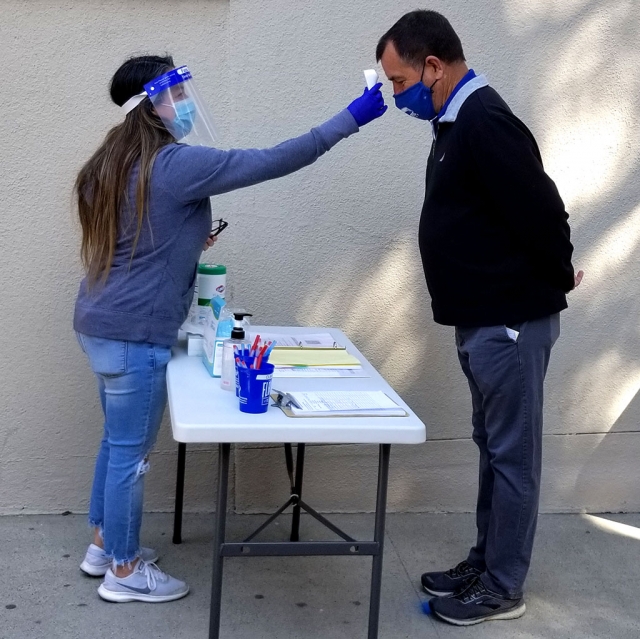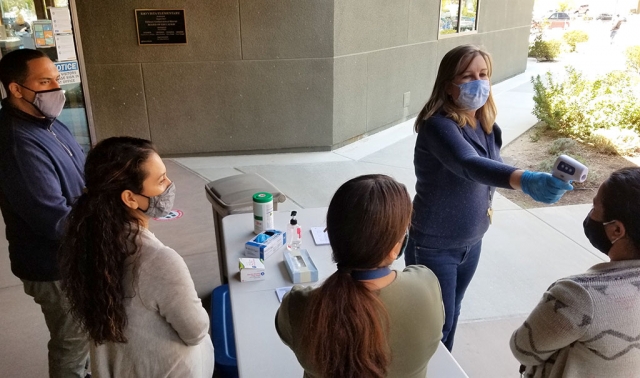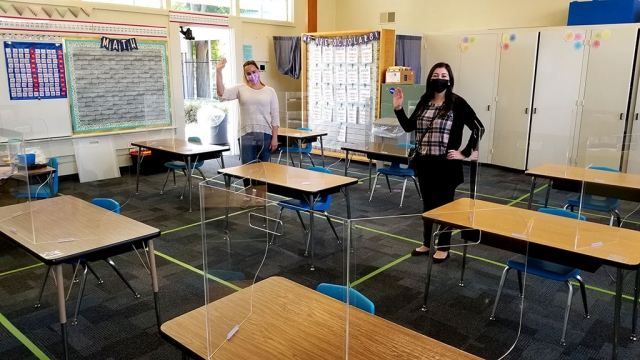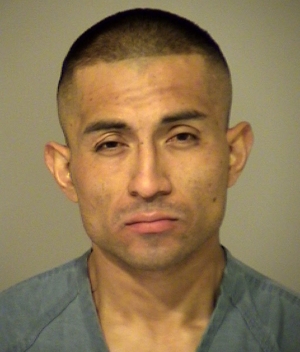|
By Anonymous — Wednesday, April 7th, 2021
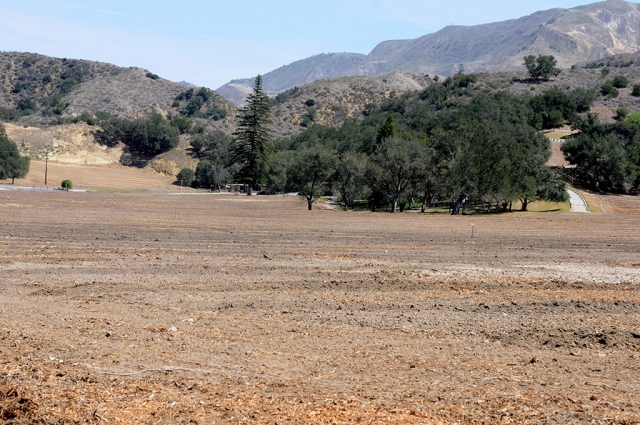 The Elkins Golf Course has recently become Elkins Ranch. The greens, clubhouse and cafe are no more and avocado orchards will soon be planted. Many people will miss the golf course but most would agree avocado trees will be much better than more houses. Thanks for the memories, Elkins. Enlarge Photo |
|
By Anonymous — Wednesday, April 7th, 2021
Based upon feedback from the first Community Conversation - Police and Community Relations – the City will kick off a series of discussions on various topics. Each topic will last one hour allowing time for questions. All discussions will be held via Zoom in both English and Spanish and broadcast live on YouTube. We have room on Zoom for 90 participants. Registration will open one week before each event. A link will be published on the City’s website and social media platforms. For registration questions, please contact Erika Herrera at eherrera@fillmoreca.gov or 805-946-1712. https://www.youtube.com/channel/UCnO2vlq-9iZRqVR9TOYg75g. Courtesy City of Fillmore Facebook Page. |
|
By Anonymous — Wednesday, April 7th, 2021
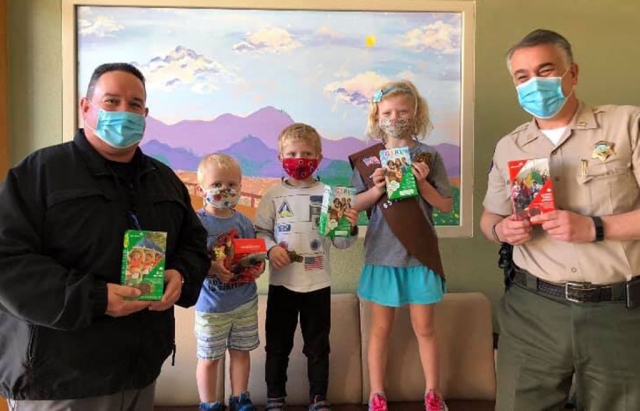 On March 29th, the Fillmore Police Station was treated to a special visit from a local Girl Scout and her family, who dropped off cookies for the deputies. They appreciated the support from the local community! Courtesy Ventura County Sheriff’s Department. Enlarge Photo |
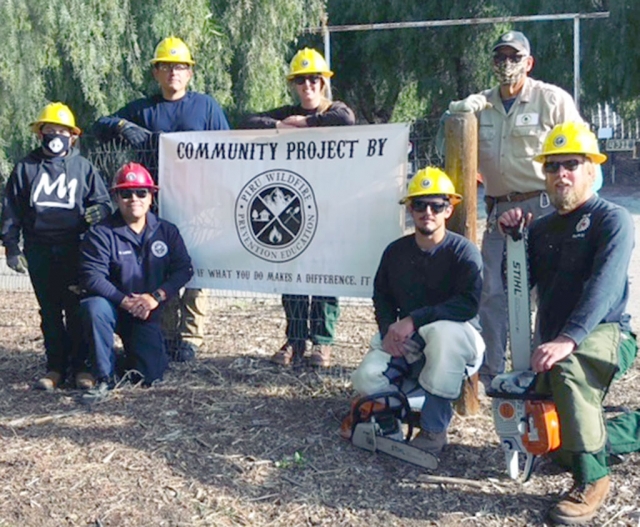 Above are volunteers who helped mitigate flammable fuel, a pepper tree fire hazard, near residents’ homes in Piru. Enlarge Photo By Anonymous — Wednesday, April 7th, 2021
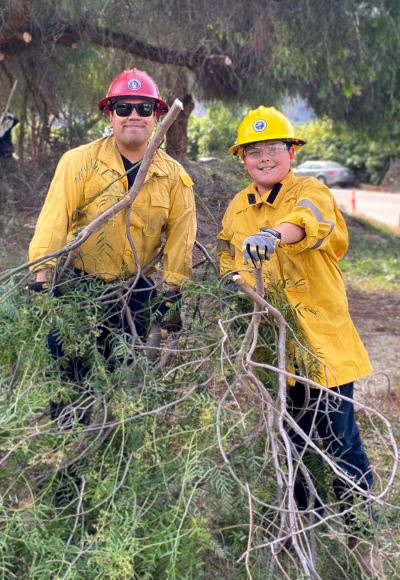 Piru Wildfire Liaison Michael Lopez with volunteer James Lopez helping clear out some vegetation. Enlarge Photo The Piru Wildfire group is a community-based volunteer organization serving Piru and surrounding communities by providing: • Hazardous Fuels Reduction in the Wildland Urban Interface • Neighbor helping neighbor Home Ignition Zone Assessments • Educational classes and mitigating wildfire risk • Smoke and Carbon Monoxide program • Community chipping events • Youth Jr. Wildland Fire Event (Summer) • Educating youth in potential fire careers We have had a successful 2021 and will continue to do so. All events are in cooperation with Ventura County Fire, Los Padres National Forest, Cal Fire, California Conservation Corps, and Ventura County Regional Fire Safe Council. If you are interested in getting involved feel free to reach out to the Piru Wildfire Liaison Michael Lopez at piruwildfireprevention@gmail.com Facebook: @piruwildfireprevention Instagram: piru_wildfire_prevention Michael J. Lopez, Wildfire Liaison/ Lights and Sirens Chair Biography Michael has been with the fire service since 2001 and continues to serve others with great integrity. He currently serves a Fire Captain in the Federal Prevention Bureau. He’s worked as a fire crew member, incident team member, crew boss and public information officer. He holds many high-level state and federal fire credentials. Michael’s various roles in fire response and customer service has allowed him to develop a professional approach to risk evaluation, effective mitigation and wildfire safety. Combined with this experience and positive attitude, Michael will always provide the best professional and personal services to our town of Piru. For updates follow: Facebook @piruwildfireprevention Instagram piru_wildfire_prevention |
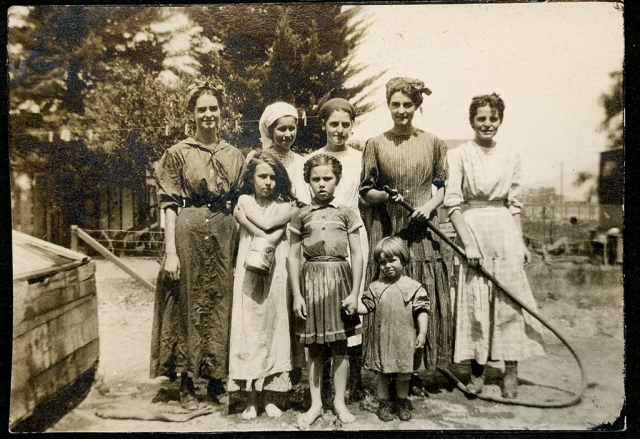 Myrtle Tallman was known for selling her book, titled “The Traveling Trio”, about her travels all the US. In 1910 she moved to Fillmore to be with her family. Pictured above are the Tallman sisters. Photos courtesy Fillmore Historical Museum. Enlarge Photo By Anonymous — Wednesday, April 7th, 2021
Courtesy Fillmore History Museum Note: For a longer version of this story with additional photos, please visit the Fillmore Historical Museum's website at https://www.fillmorehistoricalmuseum.org/myrtle-tallman Some time ago John Nichols, well known photographer and author from Santa Paula, found a small red book at a library book sale. He contacted us at the Fillmore Museum to see if we had any information on the author of the book, Myrtle Tallman, who had family in Fillmore. The following story is the result of that simple question. Myrtle Catherine Tallman Myrtle Catherine Tallman made herself famous during her lifetime by selling a book she wrote titled “The Traveling Trio” that documented her travels in 1905 all over the western United States in her wheelchair. She moved to Fillmore, California in 1910 to be with her family but later moved to Long Beach and died in 1918 and was buried with family members in Bardsdale Cemetery near Fillmore. Here is the Obituary of Myrtle Catherine Tallman From Fillmore Herald Death of Myrtle Tallman, August 26, 1918 With peaceful resignation to the fates, Miss Myrtle Catherine Tallman, a life-long invalid, sank into the great sleep that knows no waking last Monday at Long Beach. Deceased was born at Tilden, Nebraska, May 17, 1878, and at the age of 8 years she was stricken with infantile paralysis, which left her a helpless invalid for 32 years, all of which time she has been confined to a rolling chair, needing an attendant at all times. Notwithstanding her affliction, Miss Tallman was cheerful through her life of suffering. She devoted herself to study and was a writer of more than ordinary ability. Accompanied by her sister, Edythe, she came to Fillmore about nine years ago, shortly after the death of her mother, but found she could not stand the climate of this valley and took up her residence in Long Beach. But the story for me started about 3 years ago when I found a copy of a strange looking book. It had a bright red cloth cover and the illustration on the cover showed a young woman in a wheel chair being lifted into the baggage car of the Union Pacific Railway train by three porters. They were possibly African American. She was being loaded onto the train car in her wheelchair and would travel with the baggage. Two other women looked on. I took it home not knowing how it came to be for sale in Santa Paula. My first act when I buy an interesting new vintage book is to look it up on www.abebooks.com. The strange thing was that there was not another vintage copy for sale anywhere in the world. There were several reprints for sale so there must be some interest in the topic or the writings. I continued my research. Lately I’m finding a huge number of books that can be downloaded free for reading on my iPad. One source is Open Library where The Traveling Trio can downloaded as a PDF, ePUB, FB2, MOBI and TXT. Do a Google search and download your own free copy. Or buy a physical copy. My next dip into research was to search Find A Grave to see where she ended up. To my shock and surprise I found that she was buried about 10 miles from my home in Santa Paula at the Bardsdale Cemetery. The family plot contains a tombstone for her father William Warren Tallman, a Ventura County pioneer, who died at age 79 at his daughter’s home in Santa Paula. She was Mrs. Edythe Moisling. It is possible that my copy of the book came from the Moisling estate. She and her husband George are also shown living in Piru on Howe Road in the 1940 census. She died in Fillmore in 1973. I searched the Fillmore Newspaper on line at the CDND, which is the California Digital Newspaper Collection and found the obituary for Myrtle Tallman that appears at the beginning of this story. County Pioneer Called By Death William W. Tallman, 79, of Fillmore answered the call of death recently at the home of his daughter, Mrs. Edythe Moisling in Santa Paula. He had been a resident of Fillmore for the past twenty years, except for the last six months when he has been confined to bed in his daughter's home here. Now that I was getting to know the Tallman family better I went to RootsWeb.com for more information. Her occupation in 1910 is listed as “Selling own books”. The rest of this fascinating story and more photos can be found at www.fillmorehistoricalmuseum.org |
|
By Anonymous — Wednesday, March 31st, 2021
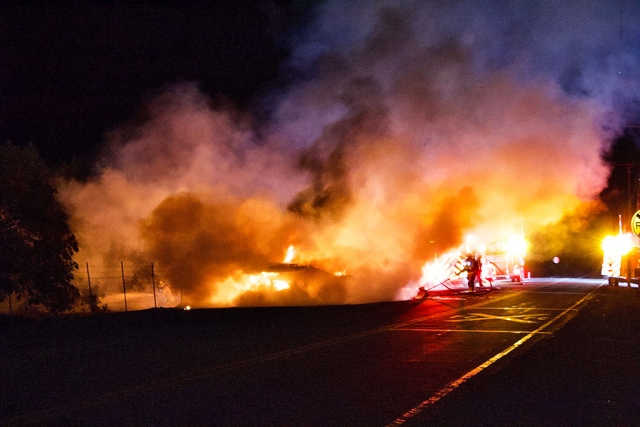 On Saturday March 27th, at 11:09pm, Ventura County Fire Department, Fillmore Fire and California Highway Patrol were dispatched to a vehicle fire located at Seventh Street and Old Telegraph Road, Fillmore. Arriving fire crews reported a flatbed trailer with no semi attached fully engulfed in flames, with oranges and lemons trees also on fire in a nearby orchard. Fire crews requested CHP for road closer. Fire Crews quickly extinguished the fire. Cause of the fire is under investigation: it has been reported by VCSD as arson. Photos courtesy Angel Esquivel—AE News. Enlarge Photo |
|
By Anonymous — Wednesday, March 31st, 2021
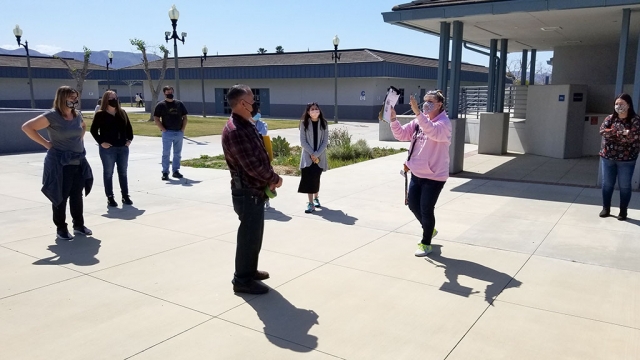 On Friday, March 26, the Fillmore Unified School District conducted training for all staff on how the district plans to reopen campuses. Each campus had general information and training for COVID-19 protocols along with information and training specific to each campus. Enlarge Photo |
|
By Ventura County Sheriff Department — Wednesday, March 31st, 2021
An 18-month old toddler was found unharmed and reunited with her parents after her mother’s vehicle was stolen from outside their Home Acres (Moorpark) residence. On March 26, 2021, at around 8:23PM, Moorpark deputies responded to numerous service calls of a possible prowler in the area of the 3800 block of Timberridge Road, in the city of Moorpark. Each caller provided the same general description of a male jumping over fences into the rear yards of multiple residences in the area of Mountain Trail Street, near Country Trail Park. As deputies were looking for the suspect, they learned a vehicle was reported stolen to California Highway Patrol (CHP), from the 4200 block of Santa Rosa Drive. The victim told CHP dispatch her young child was still inside the vehicle at the time it was stolen. Deputies quickly determined the stolen vehicle was likely related to the suspect responsible for the prowling incidents. This particular area of Santa Rosa Drive is located in the unincorporated area of Moorpark, known as Home Acres. Santa Rosa Drive is just west of where the prowler occurrences had been reported to dispatch. Ventura County Sheriff’s Office deputies assigned to the Moorpark, Thousand Oaks, Camarillo and Fillmore patrol stations, along with a Sheriff’s helicopter, responded and began a search for the stolen vehicle. A short time later, a Camarillo patrol deputy spotted the vehicle driving in the 7300 block of Santa Rosa Road and made a traffic stop. The driver, who was identified as 33-year-old Oxnard resident Jahwi Angeles-Ortega was taken into custody without incident. The toddler was found uninjured in her rear car seat and immediately returned to the care and custody of her parents. Angeles-Ortega was found to have multiple outstanding warrants for his arrest and was additionally arrested for felony violations of California Penal Code section 207(a)-Kidnapping and California Vehicle Code section 10851(a)-Vehicle Theft. Angeles-Ortega was booked into the Pre-Trial Detention Facility where he is currently being held in lieu of a $122,500.00 bail. He has a scheduled arraignment in Ventura County Superior Court on 03/30/2021, at 1:30PM, in Courtroom #13. Nature of Incident: Suspect Arrested For Kidnapping After Stealing Vehicle With Toddler Inside |
|
By Anonymous — Wednesday, March 31st, 2021
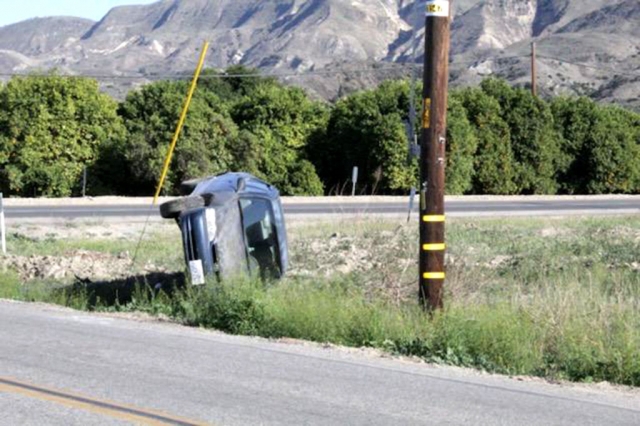 On Sunday, March 28th, at 4:09pm, Ventura County Fire and California Highway Patrol were dispatched to a rollover located at Chamberburgs Road and Riverside Avenue, Bardsdale. Arriving fire crews reported a single vehicle on its side; driver appeared to be out with no injuries. Cause of the rollover is under investigation. Photos courtesy Angel Esquivel—AE News. Enlarge Photo |
|
By Anonymous — Wednesday, March 31st, 2021
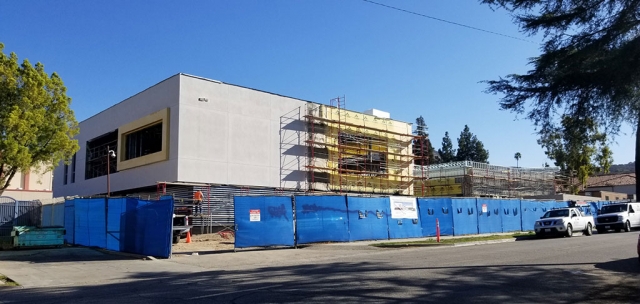 Fillmore High School’s new Career Technical Education Facility which will include an Agriculture Pathway and Transportation Systems Diagnostics Service and Repair (SDSR) Pathway Projects currently under construction. Construction began in summer/fall of 2019 and has made great progress thus far. Enlarge Photo |



